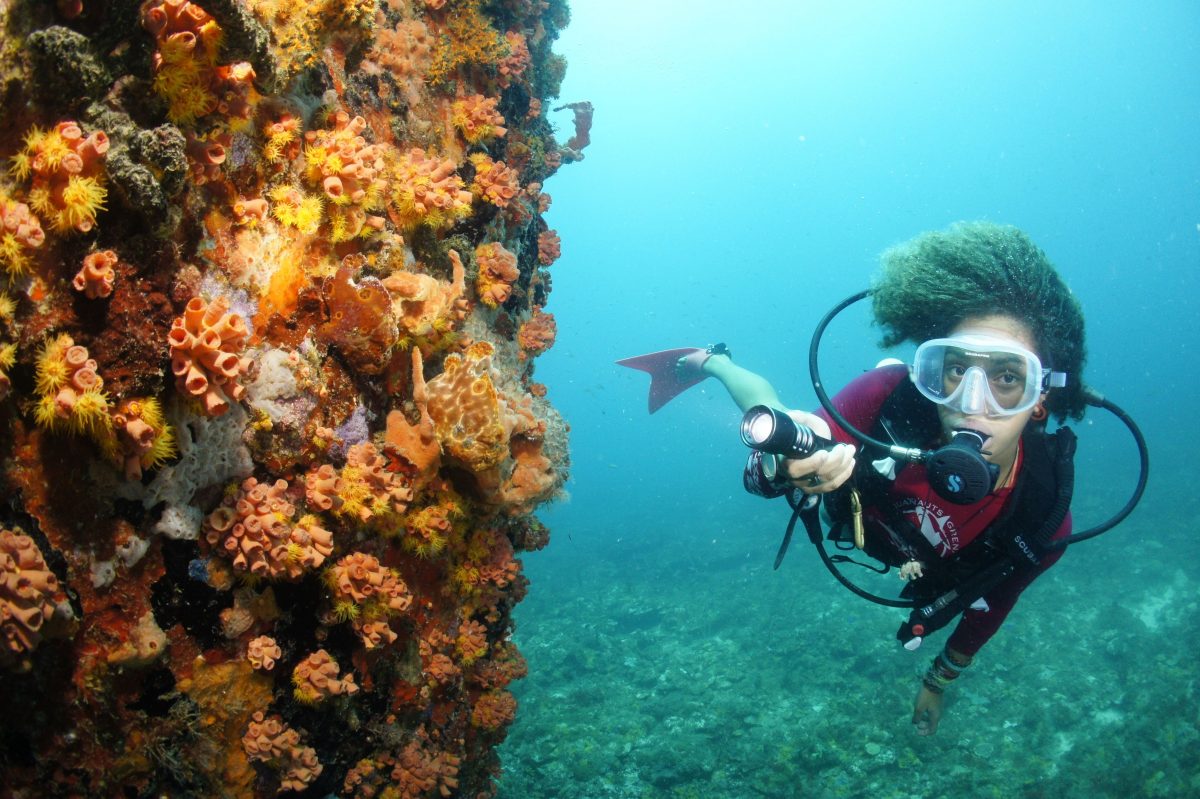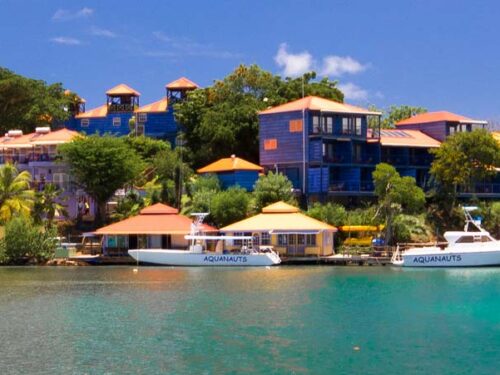What To Expect
Scuba diving Grenada means experiencing a little bit of everything: superb wreck-diving, colourful coral gardens, and a range of walls, drifts, and photographic sites. While Carriacou offers an abundance of reefs and fish, Grenada itself is best known for its wrecks. As many as fifteen of these regularly captivate novice and advanced divers alike, and include everything from coastal freighters and catamarans, to a magnificent ocean liner.
Grenada is blessed with dozens of spectacular dive sites, and while exploring by liveaboard is an option, most visitors choose to stay at one of the island’s many beach resorts, inns, and friendly hotels. It’s only a short boat trip to most of Grenada’s best dive locales, and many are no more than ten minutes from shore.
Best Time To Go To Grenada
There’s really no best time of year to experience Grenada diving. Water temperatures range from a bath-like 26oC (79oF) in December through 29oC (84oF) in July, and while visibility varies, it’s typically anywhere from 10-30 meters (30-100 feet).
How To Explore
Grenada is easy to get to. Maurice Bishop International Airport, near the capital of St. George’s, is serviced by major cities throughout North America. Travelers can combine their time on Grenada with a visit to Carriacou by taking advantage of frequent charter flights, or the inter-island ferry.
With less than 350 square kilometers to work with, Grenada manages to pack a lot in. Sugar sand beaches, botanical gardens, historical sites and museums encourage visitors to come and explore. The allure of fresh, regional cuisine vies for attention with local artisan markets, and fascinating nature treks. Grenada is known as one of the Caribbean’s spice islands, and tours of local nutmeg, mace, and cocoa estates make for the perfect distraction from those pesky surface intervals.
The Best Of Grenada Diving
As the most popular of Grenada’s wreck dives, the Bianca C. is a majestically proportioned, 180m (600ft) ocean liner known as the Titanic of the Caribbean. Lying at a gentle angle that stretches from about 30-45 meters (100-150 feet), the wreck is ideally located between open blue water and a sprawling reef system.
Sunlight streams through the vessel’s doorways and skylights, illuminating fascinating features like the ship’s bridge, swimming pool, and a hull encrusted with texture and colour. The Bianca C. is a fantastic site for pelagic encounters, with eagle rays, moray eels, Atlantic spadefish, and reef and nurse sharks frequently spotted.
Snorkelers and divers of all levels won’t want to miss Grenada’s original underwater sculpture park. In the protected region of Molinere Bay, just north of St. George’s, dozens of human figures rest serenely in clear, shallow, sun-dappled waters. As representatives of Grenada’s colourful culture, the sculptures have been strategically placed to enhance the surrounding reef, and are gradually being adorned with vivid marine organisms like fire coral and colourful sponge garlands.
Sculptures and wrecks aside, scuba diving Grenada should include a visit to Flamingo Bay at the northern end of the island’s Marine Protected Area. A showcase for some of the best of Grenada’s biodiversity, this reef’s rope & barrel sponges and Elkhorn coral accommodate such impressive marine treasures as flamingo tongue snails, horse eye jacks, spotted drums, southern stingrays, and long snout seahorses.





